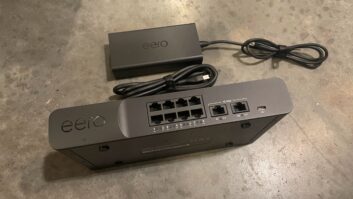
ThinkStock
Since I founded The Source Home Theater more than 10 years ago, we have not done any marketing. I have relied exclusively on customer referrals, PR (media articles), and relationships with designers, architects, and builders. In the past year, however, we started to publish our work on Houzz.com, and we have seen some inquiries from customers trickle in as they see our work and the five-star reviews left by satisfied customers on the site. That led to the sales team from Houzz calling us to set up a discussion about advertising on the site. While it intrigued me, I had no idea what to look for, how to evaluate the costs and really where to begin. I turned to Mark Feinberg, a friend and fellow integrator who also has an MBA in marketing and worked as director of marketing for several consumer and retail companies before embarking on a career in the CEDIA marketplace.
Mark joined me for the call with the Houzz sales person, and I learned a lot from just listening to the back and forth. Afterward, Mark and I got on a private call, and he walked me through a lot of the jargon used and the measurements or metrics discussed. That got me to thinking that there are so many small two- to 10-person companies that read Residential Systems, and I’m sure many of the readers out there suffer from a similar knowledge gap and aren’t fortunate to have a Mark Feinberg handy. So I thought it would be helpful to put together a list of the things to consider and metrics to discuss when talking to media sales people. You want to sound informed and knowledgeable and be able to evaluate if an opportunity is right for your company.
1.Competitive Set. This is a good way to evaluate if an opportunity is a good fit. Are other companies similar to yours advertising here, such as other AV companies, contractors, kitchen/bathroom remodelers, or closet companies? If so, and they have a long history advertising with the media vehicle (website, magazine, newspaper, etc.), then they are likely getting quality leads, and it might be a good vehicle for your company as well
2.Geographic Coverage. What’s the media outlet’s reach? Is it national, state-level, or neighborhood-centric? Can they target your ad to only certain geographic areas? With traditional media, this is easy to judge, as a local newspaper or magazine is only being distributed locally. But with digital media, someone across the country or on the other side of the world could see your ad, and that isn’t very valuable to you. You need local people to see your marketing and anyone outside of your service area is basically wasted money spent to reach them. Websites can target based on the location of the IP address and can get pretty specific in their targeting, but you need to ask about it.
3.Unique Views. This measures how much traffic a website receives. So if you are putting a banner ad on a design website, you want to know how many people, IN YOUR MARKET, are going to see the ad. For traditional media, this is the circulation — how many newspapers are distributed?
4.Open Rate and Click-Through Rate. These pertain mainly to email campaigns. Often an advertising opportunity will provide inclusion in a regularly emailed newsletter. But are people reading those newsletters? How many emails in your inbox never get opened and go right to the trash? This metric measures what percentage of recipients actually open the email and then what percentage click on a link in the email to be taken to more content. This gives you a sense of how engaged the recipients of the emails are.
5.Cost Per Click. This is just math — take the dollars spent on the campaign and divide it by the number of clicks you get to your profile or back to your website. With some advertising vehicles, like Google Adwords, you only pay when someone clicks on your ad and is brought to your website. For others, you pay a monthly fee for exposure (more like a regular branding campaign) and then you calculate the cost per clicks after the campaign is running. While you may not know the cost per click with the second type until the campaign has been running a while, you can ask the sales person to give you some examples from companies similar to yours — either other AV integrators or if that is not available, contractors, kitchen remodelers, etc.
6.Return on Investment. How much do you need to gain in new business to make this investment worthwhile? Many media sales people will ask about your average sale. Let’s say it is $10,000. They’ll then tell you that all you need is to sell one project a year from this $5,000 advertising campaign, and you’ll have more than paid for the ad. If you have a 50-percent gross margin, this is technically true. But there are other costs involved as well that need to be considered. How qualified are the leads? If it takes more calls and consults to win a job from these leads, then there is a cost associated with taking those calls and doing those consultations. Maybe your leads from referrals close at a 50-percent rate (for every two leads you get, you close one.) But from advertising, let’s hypothesize that the rate is 20 percent. Now you have to do five consults and proposals to win the one job. That is a lot more time and effort and salary to win that job. That needs to be considered. I would want at least a five-to-one return on investment. If I am going to spend $5,000 on a direct marketing campaign, I would hope to get $25,000 of profit from that campaign. Otherwise my time is better-spent cultivating prior clients and my relationships with architects and designers.
These are just some of the metrics to consider. What else do you look at when evaluating a media opportunity? What are some of the key questions you ask the sales person on the other end of the phone?







